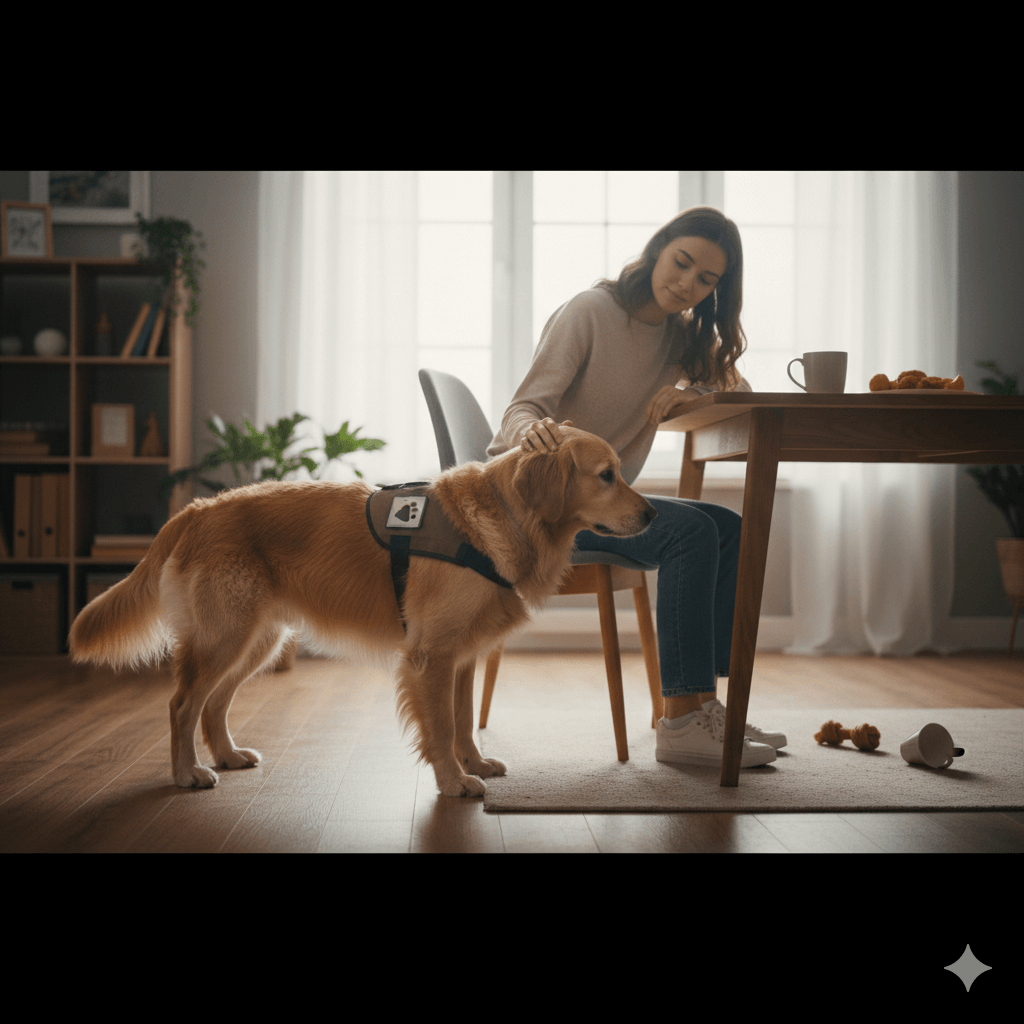How to Bell Train a Dog: A Step-by-Step Guide
Bell training is an innovative and effective way to teach your dog to communicate their need to go outside. By associating the sound of a bell with potty breaks, you can create a simple and reliable system that benefits both you and your furry friend. Whether you’re housebreaking a puppy or teaching an older dog new tricks, bell training can make life easier and reduce accidents indoors. In this blog post, we’ll walk you through everything you need to know about how to bell train a dog, from choosing the right bell to reinforcing the behavior. Let’s get started!
Choosing the Right Bell for Your Dog
The first step in bell training is selecting the right bell for your dog. Not all bells are created equal, and choosing one that suits your dog’s size, strength, and temperament is crucial for success. Here’s what to consider:
Size of the Bell: Choose a bell that’s large enough to be easily visible but not so heavy that your dog struggles to ring it.
Sound Volume: The bell should produce a clear, audible sound without being too loud or startling for your dog.
Mounting Options: Decide whether you prefer a hanging bell, a handheld one, or a portable bell that attaches to your dog’s collar.
Material Durability: Opt for a sturdy, high-quality bell that can withstand regular use and chewing if your dog is curious.
Placement Location: Hang the bell at a height where your dog can comfortably reach it with their nose or paw.
Selecting the right bell sets the foundation for successful training. Once you’ve chosen the perfect bell, you’re ready to begin teaching your dog how to use it.
Step-by-Step Guide to Bell Training
Bell training requires patience, consistency, and positive reinforcement. Follow these steps to teach your dog how to ring the bell and associate it with going outside:
Introduce the Bell: Allow your dog to sniff and explore the bell, rewarding them with treats or praise when they show interest.
Teach Them to Touch It: Gently guide your dog’s nose or paw to the bell and reward them immediately after they make contact.
Add a Cue Word: Introduce a verbal cue like “Ring the bell” or “Let’s go out” while encouraging them to touch it.
Associate with Going Outside: After your dog rings the bell, take them outside immediately and reward them once they eliminate.
Practice Regularly: Repeat the process consistently, ensuring your dog understands the connection between ringing the bell and outdoor potty breaks.
With time and repetition, your dog will learn to ring the bell whenever they need to go outside. Patience and consistency are key to mastering this skill.
Check this guide 👉Police Dog Training: Best 7 Expert Tips!
Check this guide 👉How to Use a Clicker for Dog Training: Best 7 Expert Tips!
Check this guide 👉Tackling Aggressive Dog Training: Best 7 Expert Tips!

Steps for Bell Training Success | Common Mistakes to Avoid |
|---|---|
Start with short, engaging sessions | Using punishment instead of rewards |
Use high-value treats for motivation | Skipping consistent reinforcement |
Place the bell in a consistent spot | Expecting immediate results |
Reward every successful attempt | Ignoring small progress or milestones |
Practice daily until mastered | Moving the bell frequently or confusing your dog |
Tips for Reinforcing Bell Training Behavior
Once your dog starts to grasp the concept of bell training, reinforcing the behavior is essential to ensure long-term success. Here are some tips to keep your dog motivated and on track:
Reward Consistently: Always provide a treat, praise, or playtime immediately after your dog rings the bell and eliminates outside.
Keep the Bell Accessible: Ensure the bell remains in the same location so your dog knows where to find it when needed.
Be Patient During Setbacks: If your dog forgets to use the bell, gently remind them and reinforce the behavior without scolding.
Gradually Fade Treats: Transition from treats to verbal praise or affection as your dog becomes more confident with the routine.
Monitor Progress: Track how often your dog uses the bell correctly and celebrate improvements to stay motivated yourself.
Consistency and positive reinforcement are the cornerstones of successful bell training. With time, your dog will master this helpful skill.
Troubleshooting Common Challenges in Bell Training
Even with the best intentions, you may encounter challenges during the bell training process. Addressing these issues early can prevent frustration and setbacks. Here’s how to handle common problems:
Dog Ignores the Bell: Reintroduce the bell with high-value treats and shorter training sessions to reignite their interest.
Ringing the Bell for Attention: Ignore non-potty-related bell ringing and only reward when they actually need to go outside.
Accidents Indoors: Supervise your dog closely and return to basic training if accidents occur frequently.
Fear of the Bell Sound: Use a softer bell or desensitize your dog to the sound by pairing it with treats and positive experiences.
Inconsistent Results: Review your training approach and ensure you’re rewarding the correct behavior every time.
By addressing these challenges proactively, you can overcome obstacles and help your dog succeed in bell training.
Why Bell Training Is Worth the Effort
Bell training offers numerous benefits beyond simply teaching your dog to signal when they need to go outside. It can improve communication, reduce accidents, and even enhance your dog’s confidence. Here are some key advantages of incorporating bell training into your routine:
Reduces Indoor Accidents: Bell training gives your dog a clear way to communicate their needs, minimizing unexpected messes.
Strengthens the Human-Dog Bond: The process of training together fosters trust and strengthens your relationship with your dog.
Encourages Independence: Teaching your dog to initiate potty breaks empowers them to take charge of their needs.
Saves Time and Energy: Instead of constantly monitoring your dog, you can rely on the bell to alert you when it’s time to go outside.
Works for Any Age or Breed: Whether you have a puppy or a senior dog, bell training is adaptable to all dogs with patience and consistency.
By understanding these benefits, you’ll see why bell training is a valuable investment in your dog’s well-being and your household’s harmony.
Exploring Other Ways to Signal Potty Breaks
While bell training is highly effective, it’s not the only method to teach your dog to communicate their need to go outside. If bell training doesn’t suit your dog’s personality or your lifestyle, consider these alternatives:
Verbal Cues: Train your dog to bark or whine softly when they need to go out, using positive reinforcement to encourage the behavior.
Mat or Target System: Place a specific mat near the door and reward your dog for stepping on it to signal they need to go outside.
Tug Toy Signal: Teach your dog to bring a specific toy to you when they need to go out, turning play into a useful cue.
Doorbell Press: Use a portable doorbell or button that your dog can press to alert you instead of a traditional hanging bell.
Routine-Based Signals: Establish a strict schedule so your dog learns to anticipate potty breaks without needing to signal.
Each alternative has its own pros and cons, so choose the one that best fits your dog’s temperament and your preferences. With creativity, you can find a system that works for both of you.
How to Avoid Unwanted Bell Ringing Behavior
One common concern with bell training is that dogs may ring the bell for reasons other than potty breaks, such as seeking attention or treats. To prevent this behavior from becoming a nuisance, here are some strategies to keep the training focused and effective:
Ignore Non-Potty Rings: If your dog rings the bell but doesn’t need to eliminate, calmly ignore the behavior and avoid reinforcing it.
Supervise Initial Progress: Monitor your dog closely during the early stages of training to ensure they’re ringing the bell for the right reasons.
Use a Second Signal for Attention: Teach your dog a separate cue, like bringing a toy, if they want attention rather than a bathroom break.
Limit Access Temporarily: If misuse becomes frequent, remove the bell temporarily and reintroduce it once your dog understands its purpose.
Reinforce Correct Use Only: Always reward your dog immediately after they ring the bell and successfully eliminate outside.
By addressing unwanted behaviors early, you can maintain the effectiveness of bell training and ensure it remains a helpful tool rather than a source of frustration.
Frequently Asked Questions About Bell Training
How long does it take to bell train a dog?
Most dogs learn within a few weeks, but the timeline depends on consistency and the individual dog’s learning pace.
Can any dog be bell trained?
Yes, dogs of all ages and breeds can learn to ring a bell, though some may take longer than others.
What if my dog doesn’t ring the bell?
Encourage them gently and reward even small attempts to build confidence over time.
Should I use a specific type of bell?
Any durable, audible bell works, but choose one based on your dog’s size and preferences.
Can bell training work for indoor elimination?
While possible, bell training is typically used for signaling outdoor potty breaks rather than indoor areas.
Final Thoughts: Unlocking Communication with Your Dog
Bell training is more than just a practical tool—it’s a way to strengthen the bond between you and your dog by fostering clear communication. By teaching your dog to ring a bell, you’re empowering them to express their needs and reducing stress for both of you. Remember, patience, consistency, and positive reinforcement are key to success. Celebrate every milestone, no matter how small, and enjoy the journey of learning together. With dedication and love, your dog will soon master this valuable skill, making life easier and more harmonious for everyone involved.
Understanding Bone Supplement for Cats: Best 7 Expert Tips! – Safe, vet-approved guidance for strong feline bones & balanced nutrition.
Bone Supplement for Dogs: Best 7 Expert Tips! – Expert guide to calcium, collagen & bone health for every life stage.
Understanding Can Cats Get Sunburn: Best 7 Expert Tips! – Protect your feline from UV damage with vet-backed prevention strategies.
How to Train a Seizure Alert Dog: Best 7 Expert Tips! – Learn expert-backed steps to nurture natural instincts into reliable, life-saving seizure alerts.





